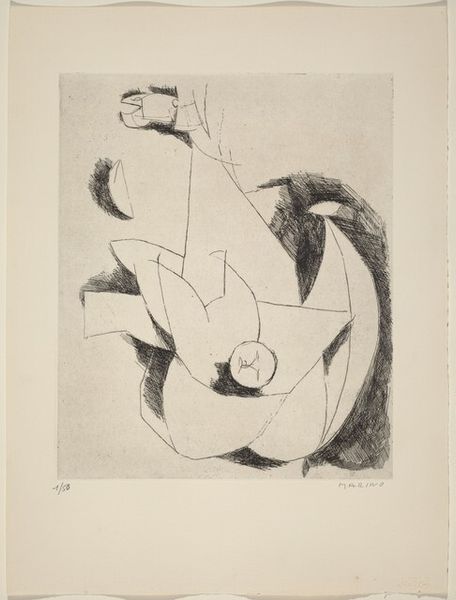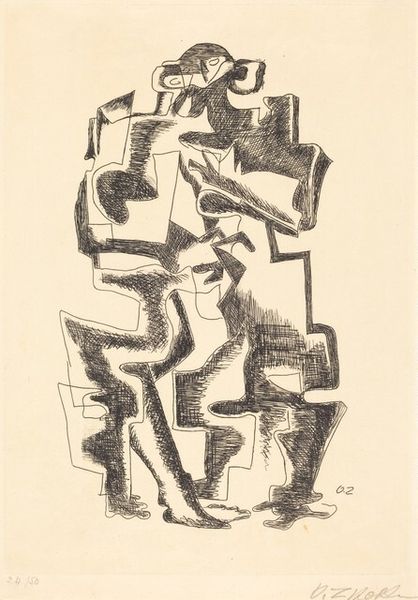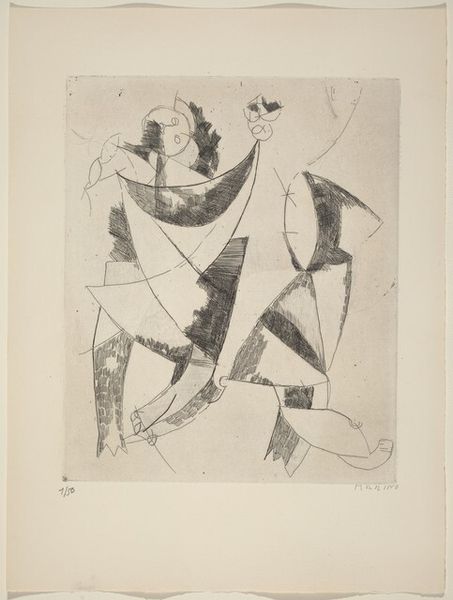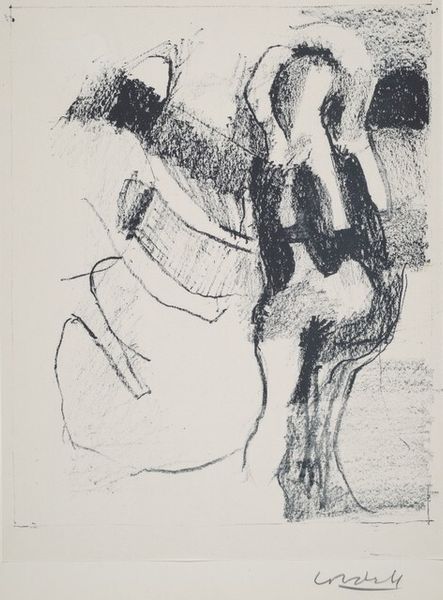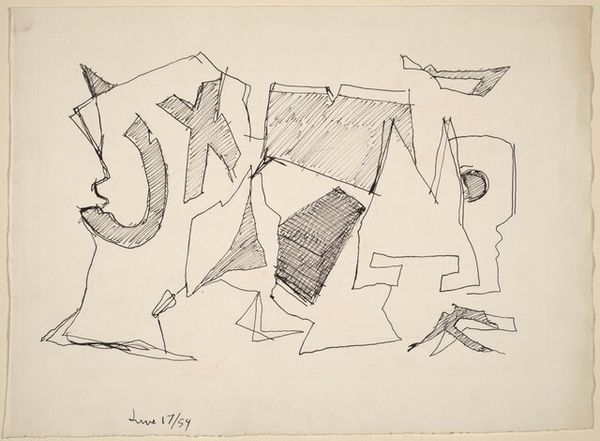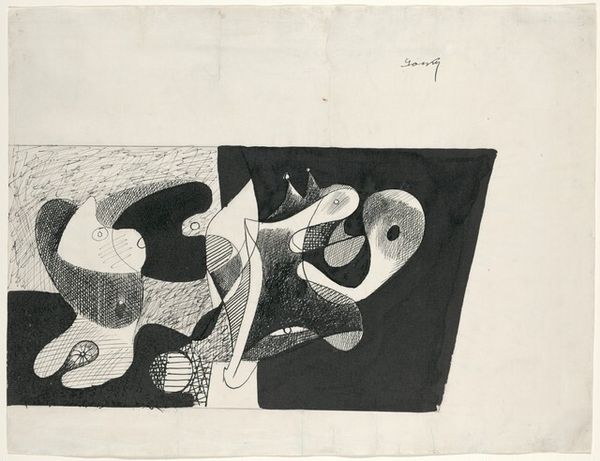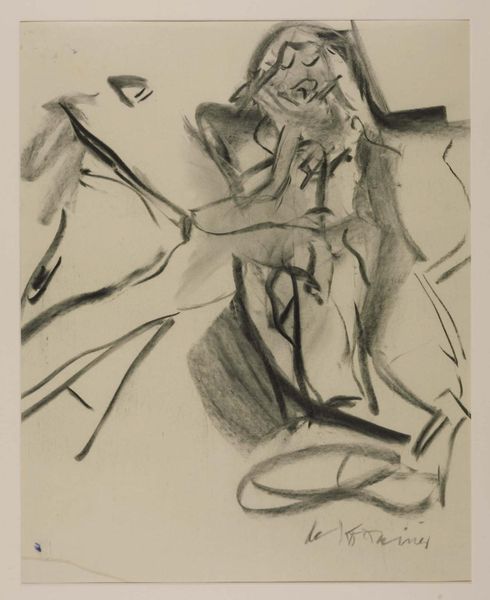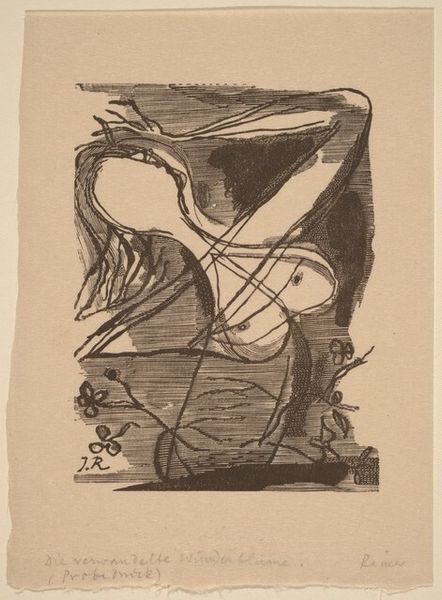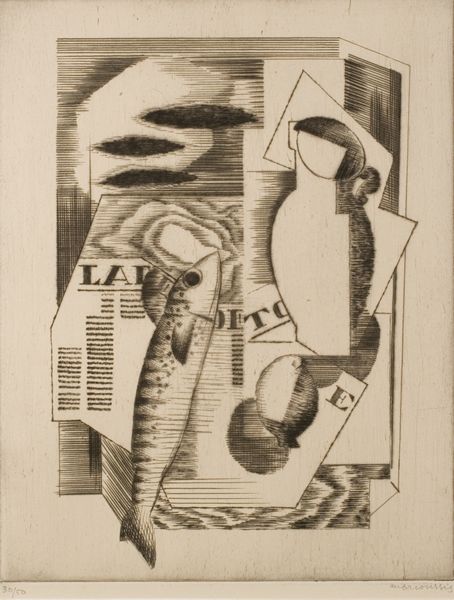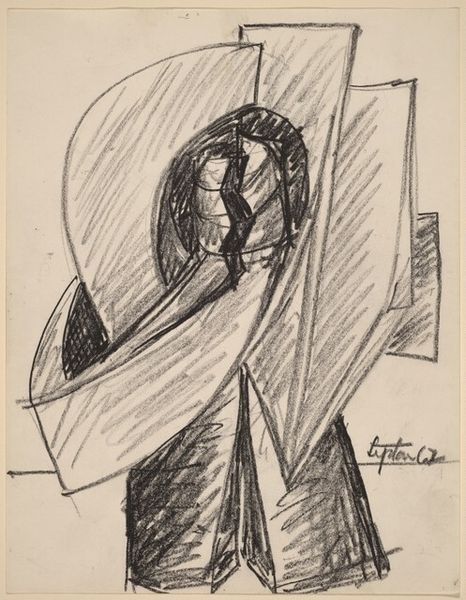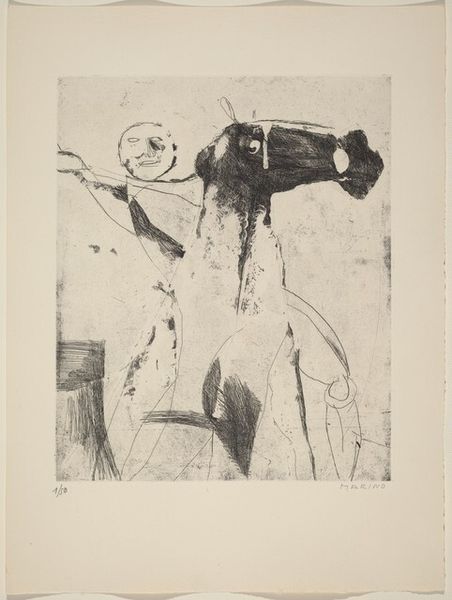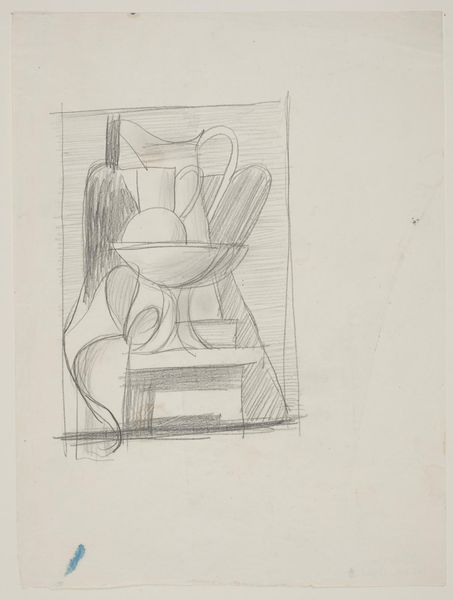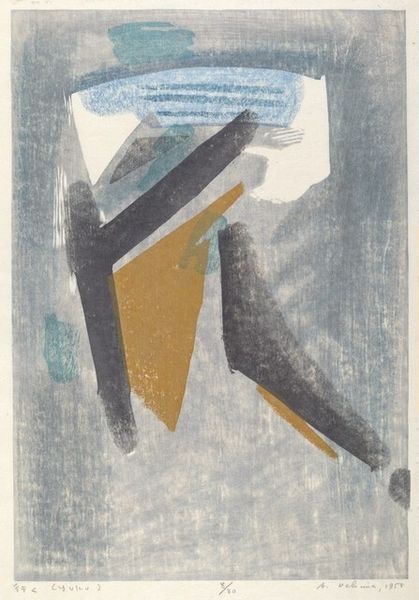
print, etching
# print
#
etching
#
figuration
#
geometric
#
modernism
Dimensions: plate: 35.8 x 29.8 cm (14 1/8 x 11 3/4 in.) sheet: 51.8 x 38.7 cm (20 3/8 x 15 1/4 in.)
Copyright: National Gallery of Art: CC0 1.0
Curator: Marino Marini created this print, "Warrior," in 1962. It's an etching on paper. What strikes you first about it? Editor: The geometry. It's a figure composed of simple blocks and lines, and yet it feels weighty, almost monumental despite the print medium. The dense crosshatching above it creates a real sense of drama. Curator: The simplification is key, isn't it? Marini's career developed in a very tumultuous moment for Italy and for Europe more broadly, amidst global conflict. By reducing the figure to these basic shapes, I see a comment on the depersonalization of violence, on the way war can strip individuals down. Editor: That makes sense when considering the context. It seems relevant to point out the materiality of the lines. These marks were physically etched into a copper plate. How was this warrior produced? Curator: That’s precisely the conversation I seek to ignite! Marini created the image by drawing into a prepared ground on a metal plate, which was then bitten by acid. The artist controls not only the image but the means of its production and distribution by creating a limited-edition print run of 50. Editor: So even in this abstracted form, there's still this incredibly direct, laborious connection between the artist, the materials, and the image. Knowing that this process of creation took place reminds me to appreciate its raw and stark nature even more. It amplifies the image's message about both violence and creation. Curator: Absolutely. It’s about finding form amid chaos. The "warrior," however geometric, still embodies resilience. It transcends the specifics of any conflict, becoming an archetype. What I appreciate most about an image like this is its engagement in discourse; how gender, politics, identity, and war are visually framed using materials at hand. Editor: Seeing art like this from the 1960s—and seeing these material decisions so tied into larger themes about how things are made—it makes me rethink those same methods of making, the materials we consume, and even how violence is made visible. Curator: Precisely. These artistic mediations invite us to analyze our socio-cultural dynamics in new and insightful ways.
Comments
No comments
Be the first to comment and join the conversation on the ultimate creative platform.
